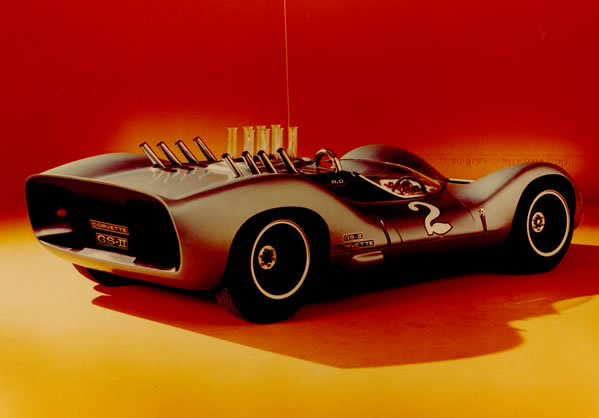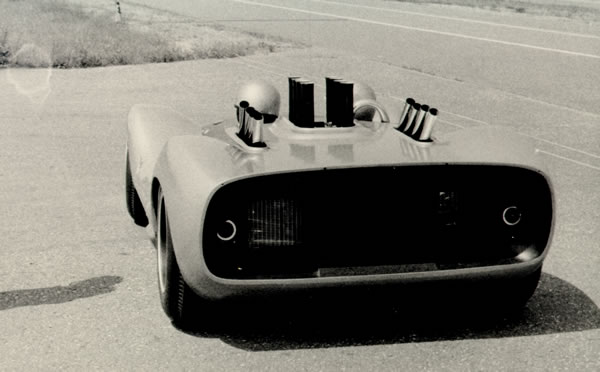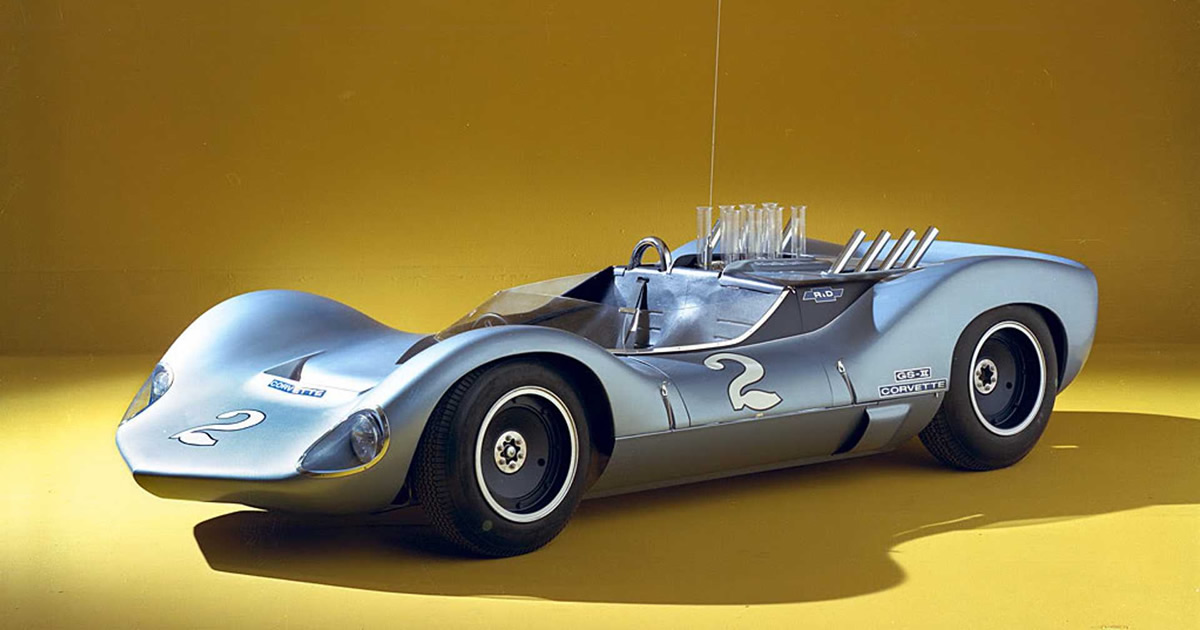Corvette Grand Sport II(b): Interview with Larry Shinoda
 |
 |
 |
 |
Grand Sport II(b): Interview with Larry Shinoda
© Wayne Ellwood, 1995
Used here with permission by the author
The original Grand Sport was a bit of a funny story, in design terms. In fact, there really wasn't a lot of design group input because, at the time, Zora and Bill Mitchell were having a fairly good argument. Bill told us not to have anything to do with Zora so, as a result, the engineers only got a few sketches and ideas from us. It was Gib Hufstader, as I recall, who did a lot of the translation of our sketches into the real product. I think they did a pretty good job considering that it was an "engineers" interpretation of a functional product. The way they treated the FIA-required luggage compartment and the oil coolers, for example, were not the way that design would have done it. But, like I said, it was still a good job.
Now Grand Sport II(b) was a research project started by Frank Winchell. This car often gets confused with CERV II, even inside GM. They are not the same car at all.
Our involvement in GS II(b) started when Jim Hall brought in his first version of the second series of Chaparrals. His Chaparral II (a) was the first of his mid-engined cars and GM was going to help him. Bill Mitchell agreed to my involvement in the project, but he didn't have anything to do with it personally.
Unbeknownst to me, Jim Hall had already talked with Bob McLean and one of his engineers, Ed Heinzman. These were the people who originally had the idea of using the inverted air foil idea to generate downforce. For the Chaparral II (a) the concept included the high nose and the heavily cambered sides. This was the same idea that we had incorporated into the 1963, together with the high belt line and wheel bumps that Mitchell wanted. It hadn't really worked with the '63 or with the original Grand Sports. For the '63 model they had tried the grilles on top of the hood to vent air and reduce lift but that idea didn't really work very well either. To counteract the lift, Jim Hall's group had added a very large front spoiler. That design had proved good enough to win at Riverside but with the same size tires front and rear the whole car really didn't work as well as it might have.
The R&D group picked up on the first effort and we developed the GS II(b). We adopted a more nose-down attitude to counteract lift forces.
The Chevrolet R&D group's GS II (a) had been a thin gauge steel monocoque; we moved to a new aluminum monocoque chassis with thin fibreglass body for GS II(b). In fact, we actually manufactured the car right in GM design. As I recall, these cars were really our very first effort at a vacuum-bagged casting for fiberglass. The fiberglass shell was so thin that it was translucent. You can easily see it in some of the photos we took.
The end result was a chassis that came in at 1450 pounds, wet. It did 198 MPH at the proving grounds on one run. Jim Musser was driving with Tom Goada sitting as technician when the doors blew off. It seems that the air flow got under them just a bit and they just popped off.
After that, Jim Hall continued to benefit from the work we did in GM but all further development of the car went back to his facility in Texas. The cars that followed were very closely tied to the GS II(b). His Chaparral II(c) and (d) were still, more or less, versions of the Grand Sport II. Then Mike Pocobello, one of our engineers, went to work for Jim Hall. He did the II(e) high wing or "albatross" car. I think that by the time they got to the "sucker" car, the GM influence was pretty well dying off. I just recently got the latest book on this subject called "Chaparral" by Falconer and Nye; if you want to follow-up on the Chaparrals, that's the place to look.
